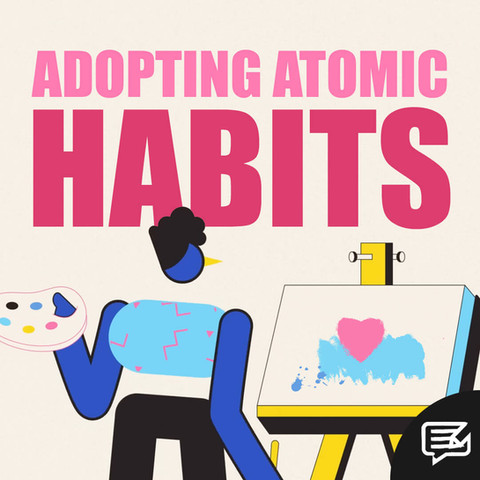
05.04.2022
THE IMPORTANCE OF RANGE
What do hedgehogs, foxes, frogs and birds have in common?
Give up? Well, they’re all used to explain the importance of having range.
David Epstein’s 2019 book ‘Range: Why Generalists Triumph in a Specialized World’ makes for a fascinating read, introducing various analogies to explain why having a breadth of knowledge and experience is so vital.



Let’s start with the hedgehogs and foxes. Referencing Philip Tetlock’s well-known nicknames, Epstein explains the key differences between the narrow-view hedgehogs “who know one big thing”, and the integrator foxes, “who know many things”.
Epstein explains:
“Hedgehog experts were deep but narrow. Some had spent their careers studying a single problem [...] They fashioned tidy theories of how the world works through the single lens of their specialty, and then bent every event to fit them. The hedgehogs, according to Tetlock, ‘toil devotedly’ within one tradition of their specialty, ‘and reach for formulaic solutions to ill-defined problems.’ Outcomes did not matter; they were proven right by both successes and failures, and burrowed further into their ideas. It made them outstanding at predicting the past, but dart-throwing chimps at predicting the future.
“The foxes, meanwhile, ‘draw from an eclectic array of traditions, and accept ambiguity and contradiction,’ Tetlock wrote. Where hedgehogs represented narrowness, foxes ranged outside a single discipline or theory and embodied breadth. Incredibly, the hedgehogs performed especially poorly on long-term predictions within their domain of expertise.”
These nicknames do a sterling job of explaining why specialists might struggle to make long-term predictions, but in what other ways is having a wider view important? And how do we develop range in the first place?
Epstein argues that the way to develop range is by sampling widely, gaining a breadth of experiences, taking detours, experimenting relentlessly and juggling many interests. A certain someone by the name of Michelangelo did just that…
Epstein writes:
“Popular lore holds that the sculptor Michelangelo would see a full figure in a block of marble before he ever touched it, and simply chip away the excess stone to free the figure inside. It is an exquisitely beautiful image. It just isn't true.
“Art historian William Wallace showed that Michelangelo was actually a test-and-learn all-star. He constantly changed his mind and altered his sculptural plans as he worked. He left three-fifths of his sculptures unfinished, each time moving on to something more promising. The first line of Wallace's analysis: ‘Michelangelo did not expound a theory of art."’ He tried, then went from there. He was a sculptor, painter, master architect, and made engineering designs for fortifications in Florence. In his late twenties, he even pushed visual art aside to spend time writing poems, half of which he left unfinished […] He started with an idea, tested it, changed it, and readily abandoned it for a better project fit. Michelangelo might have fit well in Silicon Valley; he was a relentless iterator.”
Whilst abandoning a project midway through may sound chaotic and unproductive, there is some science behind it. Epstein points to the work of entrepreneur and best-selling business writer, Seth Godin, to explain why. In his 2007 book, The Dip, Godin writes:
“’Quitters never win and winners never quit’ is bad advice: it’s true that quitters can’t win, but in fact winners quit all the time. The key to quitting successfully is quitting the right things at the right time. Strategic quitting is a hallmark of successful organizations and people. Serial and reactive quitting are habits of unsuccessful people.”
So, what exactly does Godin mean by that? Epstein unpacks the idea:
“Godin argued that ‘winners’ - he generally meant individuals who reach the apex of their domain - quit fast and often when they detect that a plan is not the best fit, and do not feel bad about it. ‘We fail,’ he wrote, when we stick with ‘tasks we don't have the guts to quit.’ Godin clearly did not advocate quitting simply because a pursuit is difficult.
“Persevering through difficulty is a competitive advantage for any traveller of a long road, but he suggested that knowing when to quit is such a big strategic advantage that every single person, before undertaking an endeavor, should enumerate conditions under which they should quit. The important trick, he said, is staying attuned to whether switching is simply a failure of perseverance, or astute recognition that better matches are available.”
In a specialised world, then, it’s best to be an integrator fox who knows when to quit. Got it! But where on earth do the frogs and birds come into it?!
Well, not every organisation will be teaming with foxes, and some degree of co-habitation with narrow-minded hedgehogs will be required. In which case, the most successful and innovative organisations are the ones who create an environment where both specialists and generalists can collaborate and follow their own curiosity.
To explain this point, Epstein refers to the work of eminent physicist and mathematician, Freeman Dyson.
Dyson argued we need both ‘focused frogs’ and ‘visionary birds’ to succeed. Writing in 2009, Dyson explained:
"Birds fly high in the air and survey broad vistas of mathematics out to the far horizon. They delight in concepts that unify our thinking and bring together diverse problems from different parts of the landscape. Frogs live in the mud below and see only the flowers that grow nearby. They delight in the details of particular objects, and they solve problems one at a time."
The world, he wrote, is both broad and deep: "We need birds and frogs working together to explore it."
Epstein adds:
“Dyson's concern was that science is increasingly overflowing with frogs, trained only in a narrow specialty and unable to change as science itself does. ‘This is a hazardous situation,’ he warned, ‘for the young people and also for the future of science.’”
Changing as science itself does, is one thing, but sometimes success can be found in embracing what you know. Gunpei Yokoi – legendary game designer for Nintendo – did just that, utilising an approach he termed ‘lateral thinking with withered technology.’
Epstein explains:
“Lateral thinking is a term coined in the 1960s for the reimagining of information in new contexts, including the drawing together of seemingly disparate concepts or domains that can give old ideas new uses. By ‘withered technology,’ Yokoi meant tech that was old enough to be extremely well understood and easily available, so it didn't require a specialist's knowledge. The heart of his philosophy was putting cheap, simple technology to use in ways no one else considered. If he could not think more deeply about new technologies, he decided, he would think more broadly about old ones.”
And so, the Game Boy was born. Epstein writes:
“From a technological standpoint, even in 1989, the Game Boy was laughable. Yokoi's team cut every corner. The Game Boy's processor had been cutting edge - in the 1970s. By the mid-1980s, home consoles were in fierce competition over graphics quality. The Game Boy was an eyesore. It featured a total of four grayscale shades, displayed on a tiny screen that was tinted a greenish hue somewhere between mucus and old alfalfa. Graphics in fast lateral motion smeared across the screen. To top it off, the Game Boy had to compete with handheld consoles from Sega and Atari that were technologically superior in every way. And it destroyed them.”
Ask anyone what the must-have toy of the late-80s and early-90s was, and I’m confident that grey rectangular block with pink buttons will come out on top. Having sold 118.7 million units, it was far and away the most successful console of the twentieth century.
Epstein explains why:
“What its withered technology lacked, the Game Boy made up in user experience. It was cheap. It could fit in a large pocket. It was all but indestructible… Unlike its power-guzzling color competitors, it played for days (or weeks) on AA batteries. Old hardware was extremely familiar to developers inside and outside Nintendo, and with their creativity and speed unencumbered by learning new technology, they pumped out games as if they were early ancestors of iPhone app designers - Tetris, Super Mario Land, The Final Fantasy Legend, and a slew of sports games released in the first year were all smash hits. With simple technology, Yokoi's team sidestepped the hardware arms race and drew the game programming community onto its team.”
And thank God he did! My life today might look a whole lot different had my interest in computers not been piqued by Nintendo during my formative years. You wouldn’t be reading this article now, that’s for sure!
Now, if you’ll excuse me, I’m off to listen to some classical music, write some poetry and paint the Welsh landscape... and quit half way through.

























































